#CENTRE PICASSO
Explore tagged Tumblr posts
Video
CENTRE PICASSO-HORTA DE SANT JOAN-ARTE-PINTURA-ENCUENTRO-GENIO-FOTOS-ARTISTA-PINTOR-ERNEST DESCALS por Ernest Descals Por Flickr: CENTRE PICASSO-HORTA DE SANT JOAN-ARTE-PINTURA-ENCUENTRO-GENIO-FOTOS-ARTISTA-PINTOR-ERNEST DESCALS- Importante Encuentro con el Genio, en el CENTRE PICASSO de HORTA DE SANT JOAN he disfrutado, como hacía tiempo que no me sucedía, de la maravillosa obra, pintura y muchos dibujos realizados en el pueblo en sus dos estancias, Pablo Ruiz Picasso trabajó en la creatividad plástica a través de las motivaciones que aquí encontró,quiero subrayar su cantidad de apuntes y también sus retratos de los habitantes y amigos, el joven artista Picasso empezó en estas tierras de la Terra Alta de Tarragona su modo personal de ver el mundo. para terminar desarrollando el Cubismo. Recomiendo la visita al Museo y los que puedan entender entenderán. Fotos del artista pintor Ernest Descals en homenaje al Picasso más íntimo.
#CENTRE PICASSO#ENCUENTRO#HOMENAJE#HOMAGE#PABLO RUIZ PICASSO#TERRA ALTA#TARRAGONA#CATALONIA#CATALUNYA#CATALUÑA#GENIO#MUSEO#MUSEUM#PINTURA#DIBUJOS#APUNTES#RETRATOS#CREATIVIDAD#PLASTICA#HABITANTES#AMIGOS#PINTAR#ESTANCIAS#PUEBLO#POBLE#VILLAGE#ART#ARTE#ARTWORK#PINTURAS
0 notes
Text











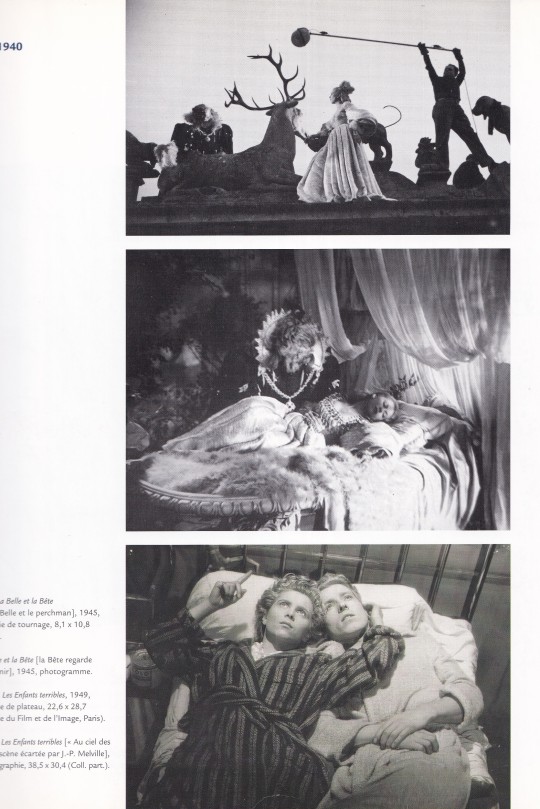




Jean Cocteau
Sur le fil du siècle
L'exposition / The Exhibition
Valérie 20th conception
Centre Pompidou, Paris 2003, 60 pages, 27x27cm, ISBN 2-84426-222-8
euro 40,00
email if you want to buy [email protected]
Paris Centre Pompidou 25 septembre 2003 - 5 janvier 2004
Jean Cocteau (1889-1963) fut écrivain, poète, cinéaste, dessinateur, peintre, scénographe, chorégraphe, photographe, dramaturge et animateur de la scène musicale française. Pendant près de cinquante ans, cet agitateur d'idées et artiste de génie a déployé une activité rodigieuse, diverse et féconde. Le « monde » de Cocteau est particulièrement peuplé : Pablo Picasso, Jean Marais, Coco Chanel, François Truffaut, Man Ray, Amedeo Modigliani, pour n'en nommer que quelques-uns. L'artiste a traversé le vingtième siècle de Proustà Andy Warhol. L'exposition présentée au Musée, qui réunit quelque 700 œuvres, reflétera ce foisonnement où les disciplines et les personnalités se croisent et s'influencent.
The most comprehensive retrospective exhibition to date in France of the eclectic work of Jean Cocteau (1889-1963), poet, writer, critic, but also film director, drawing artist and player on the French musical scene, from the second decade of the 20th century to the 60s. He promoted jazz, cinema and plastic abstraction, he was author of Le Grand Ecart and Le Rappel à l'ordre, had Antigone dressed by Chanel, sponsored the first Cannes Festival and discovered and defended the talent of François Truffaut. The prolificacy of his activities is reflected in the works on show: 335 drawings, 300 photographs, 22 paintings by major artists who celebrated him, 50 or so manuscripts, objects and sculptures.
21/12/24
#Jean Cocteau#exhibition catalogue#Centre Pompidou 2003/04#Pablo Picasso#Édith Piaf#Jean Marais#Coco Chanel#Man Ray#Truffaut#Modigliani#fashionbooksmilano
38 notes
·
View notes
Text








Picasso 50 years of sketches at the Pompidou, Paris Jan 2024
Amazing exhibition design also, huge space with floating walls , videos projected throughout. The sections weren’t very clear but it was overwhelming in a good way, you could walk through and still get a good sense. Would have maybe placed markers (colors?) to show which panels belonged to each section. But overall loved the panels hanging a few feet off the flooor
2 notes
·
View notes
Text
All of the song and dance about the MONA women's lounge when the art is FOR MEN?? Women are just a prop to engineer outrage. And sure that's a statement but I'm supremely uninterested in being a prop, I'd much rather just interact with art as a person?
#also ive been to the womens room it was filled with male art (inc picasso famous woman disrespector) and marriage artifacts#the male servant thing is just so.....not even how women think cant we be alone for 5 fucking seconds#also in the centre on a coffee table was a book opened to pictures of sliced meat#like girl am i a fucking joke to you??#the point of this is to make men angry did you even THINK about how women might respond? have you ever thought about making art for women?#or at the very least art that didn't centre men???
0 notes
Text
Picasso, en veux-tu, en voilà...
Picasso forever. Or at least, 50 times Picasso, 50 years after his death. I didn't see all 50 (!), I saw only 3. But I loved them all. However often we may have seen some of the works shown, they remain fascinating.
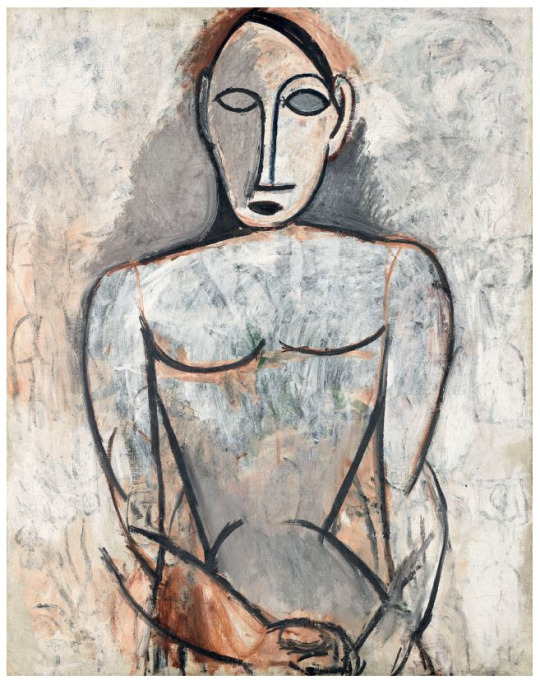
View On WordPress
#art#Célébration-Picasso#Centre Pompidou#exposition#Françoise Gilot#Gertrude Stein#musée du Luxembourg#peinture#Picasso#vaut le détour#Von der Heydt Museum
1 note
·
View note
Text
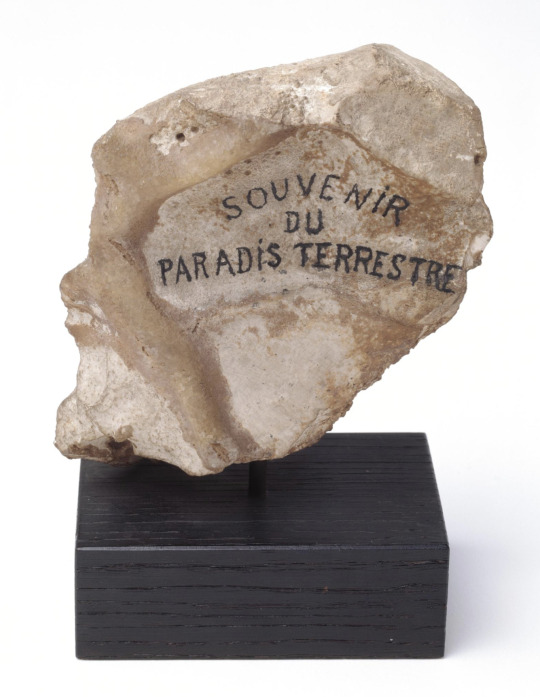
André Breton (1896, France - 1966, France) | Souvenir du paradis terrestre, 1953
Le mur de l’atelier d’André Breton, entré par dation au Musée en 2003, évoque la seconde pièce de l’appartement de la rue Fontaine à Paris, occupé par le poète, de 1922 à sa mort en 1966. Les 212 œuvres d’art et objets qui y sont regroupés rappellent l’esthétique défendue par Breton dans ses écrits et à travers sa collection. Il n’a cessé de l’enrichir, guidé par « un irrésistible besoin de possession », qu’il attribuait au désir de « s’approprier les pouvoirs des objets » ayant suscité en lui surprise et interrogation. Autour des chefs-d’œuvre des artistes qu’il a soutenus (Notre avenir est dans l’air, 1912, de Picasso, LHOOQ, 1919, de Picabia, Tête, 1927, de Miró, Boule suspendue, 1930-1931, de Giacometti, La Boîte-en-valise, 1935-1941, et Coin de chasteté, 1954/1963, de Duchamp), sont soigneusement accumulées des pièces en résonnance avec sa poétique de « l’œil à l’état sauvage, œil premier, libre de toute entrave » : des tableaux, des masques et des objets océaniens, précolombiens et nord-américains, ainsi que des objets trouvés, des objets populaires, des pierres, des racines, des boîtes de papillons.
Brigitte Leal
Source : Extrait du catalogue Collection art moderne - La collection du Centre Pompidou, Musée national d’art moderne , sous la direction de Brigitte Leal, Paris, Centre Pompidou, 2007
156 notes
·
View notes
Text
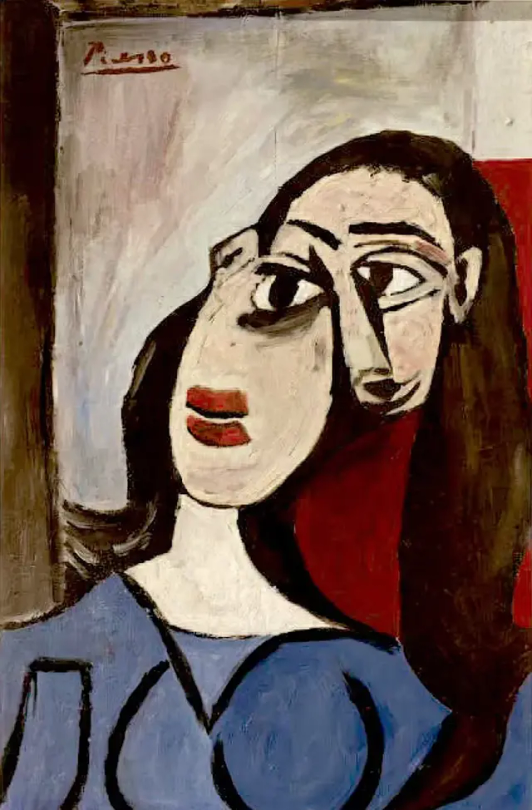
‘Horrible’ Painting Found by a Junk Dealer Could Be a Picasso Worth $6 Million
An Italian family had long debated throwing away the unconventional portrait.
It’s not often you sit down to read a book about the greatest masterpieces of art history, then look up to find a stellar example hanging on your own wall. Yet this was apparently the experience of Andrea Lo Rosso, who began raising questions about a peculiar painting in his parents’ living room at their home on Capri in Italy. Could it possibly be by Picasso, the forefather of Modern art himself?
For years the man’s parents had argued over the unconventional portrait, which was discovered by his father Luigi Lo Rosso in the cellar of a villa in Capri 1962, given a cheap frame, and put on the wall. This did not please his wife, who despaired at the female sitter’s strangely contorted face. The scrawled name “Picasso” in the top left hand corner meant nothing to either of them.
“My father was from Capri and would collect junk to sell for next to nothing,” Lo Rosso told the Guardian. “He found the painting before I was even born and didn’t have a clue who Picasso was. He wasn’t a very cultured person.”
“My mother didn’t want to keep it—she kept saying it was horrible,” he added.
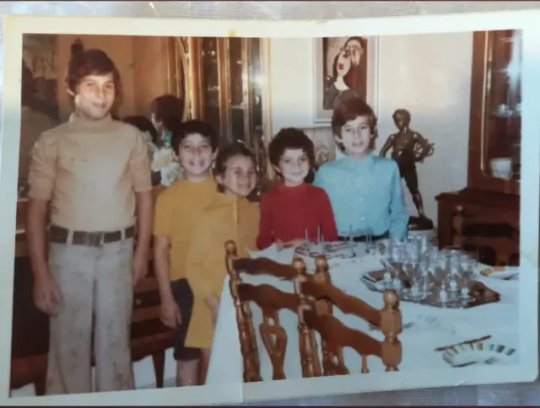
The family sought out the counsel of the Arcadia Foundation, which carries out art attributions and appraisals. A member of its scientific committee, Dr. Cinzia Altieri, a trained graphologist or handwriting specialist, studied the signature on the painting. The foundation also enrolled the help of famed art detective Maurizio Seracini, who led a chemical-scientific analysis of the work.
As a team, these experts have confirmed the attribution to Picasso. The painting has been identified as a portrait of Dora Maar, the French Surrealist photographer, painter, and poet who was at that time Picasso’s mistress.
It is believed to have been made some time between 1930 and 1936 during a trip to Capri, where Picasso often visited, although he first met Maar in late 1935 or early 1936. The pair had a relationship lasting nearly nine years and, though she was an artist in her own right, Maar’s work has only recently received the attention it deserves. In 2019, a landmark retrospective of over 250 works by Maar was presented at the Centre Pompidou in Paris and Tate Modern in London.
If the attribution turns out to be true, the Lo Rossos can expect a financial windfall. The Arcadia Foundation has valued the alleged Picasso at €6 million ($6.7 million).
The artist painted many portraits of Maar in their time together, and several reside in major museum collections today. The auction record for a painting of Maar by Picasso was set in 2006, when Sotheby’s New York sold Dora Maar au chat (1941) for $95.2 million, according to the Artnet Price Database.
Unfortunately for this team of Italian art sleuths, their rediscovered modernist masterpiece piece is unlikely to fetch in the millions until it has been legitimized by official Picasso authenticators.
Andrea Lo Rosso said that, so far, the Picasso Foundation in Malagá, Spain has refused to even assess the work, which it believes to be a fake. The foundation declined to comment publicly on the work when contacted. It reportedly receives hundreds of authentication requests every day.
The Picasso Administration in Paris has also been reached for comment but did not respond by publication time.
By Jo Lawson-Tancred.

#Pablo Picasso#‘Horrible’ Painting Found by a Junk Dealer Could Be a Picasso Worth $6 Million#Dora Maar#spanish artist#painter#painting#art#artist#art work#art world#art news#lost and found
19 notes
·
View notes
Note
Nana was planning on giving Tony another one of her snoopy surprise "nutrition check" visits. Soon enough she decided to jump straight into his lab. The thing about her is that, she becomes invisible, warps to a place, takes a look at the situation going on and then decides if she is going to remove her "Invisibility blanket" or not. This time, a part of her saying not to, she decided to go without the Invisibility cloak since all Tony does- is sit around. Unfortunately for her, a very ear killing voice was awaiting her. A kid. Dead centre. Stark tower. The last thing she expected to see Tony Stark's lab. Great, now he also knows your here genius.
//can I please partake in the rppppppp//
“Ah, Nana, there you are!” Tony spun around dramatically, holding a wrench in one hand and gesturing grandly with the other. The kid—currently busy banging on something that looked suspiciously important—let out a loud giggle.
“Before you ask,” Tony started, raising a finger as if preemptively defending himself, “no, this is not my kid. Technically. I didn’t wake up one day and decide to add ‘surprise babysitter’ to my ever-growing résumé.”
He stepped aside, revealing what could only be described as chaos incarnate: tools scattered everywhere, some of them precariously balanced on the edge of his workbench, and the toddler happily smearing yogurt on a holographic interface.
“See that?” Tony said, pointing to the mess. “That’s not my doing. I’d love to take credit for the yogurt art—it’s abstract, really—but nope. This little Picasso just appeared. No warning, no instructions, just dropped in like a malfunctioning Amazon delivery. And now you’re here, so congratulations, Nana! You’ve been promoted to co-surprise-parent duty.”
He sighed, wiping his hands on a grease-stained rag and gesturing to the kid. “Now, unless you’ve got a hidden bag of snacks or some magical ability to make toddlers calm down, I’d suggest we strategize. Or, you know, we both go invisible and pretend this never happened. Your call.”
15 notes
·
View notes
Text
4000 Followers: Barcelona - Matthew Keller x Reader

Tagging: @rosielou94 d @kmc1989@toheavenwmydrms@noxytopy
Companion piece to:
5 Times - Keller almost tells you he loves you.
Three Minutes - It takes three minutes for Matt Keller to lose his humanity.
Transactional - In the wake of your injury, you leave Keller a Dear John letter.

It takes a couple of months for Matt to track you down. You’ve rented an apartment in Barcelona, near the town centre because your working a legal gig for the Picasso Museum. Your business has been flourishing in the time you’ve been apart. You’ve bounced from Frankfurt, Vienna, Milian and now to here. Matt’s always been a few steps behind you, he’s missed you by twelve hours back in Italy.
Matt has never done this before. He doesn’t chase after women, he’s usually the one that does the leaving. The fact he wants to follow you, it speaks volumes.
When you enter the apartment he’s sitting on your couch flicking through a Spanish fashion magazine, his brow furrowed. He sets it down on the coffee table as you close the door behind you.
"I'm not giving you security details for the museum." You tell him drifting towards your desk to check your laptop. To your surprise it looks untouched.
"You know that's not why I'm here." He says as he raises to his feet and approaches the desk. His fingertips caress the tiny terracotta dog perched on the corner. It’s new, an unusual piece, not expensive but he knows it’s a sign, one that you’re planning to stay for a while.
“No I don’t.” You say distractedly as you close your laptop. “Because you don’t give me a reason behind anything you do, why you leave, why you stay, why you turn up in my place in Barcelona. I get nothing from you Matt.”
“Avery…” He says softly, his palm coming to rest upon yours and you pull away because his touch, it always leads to the same damn thing. “You know how fucked up I am.”
“Yea,” You tell him meeting his gaze. “It’s a good excuse to hide behind when shit gets too real isn’t it?”
This right here, this is why he loves you. You see through all of his bullshit, you call him on it. You are the first person who has ever bothered to scratch beneath the surface of his psyche. The only one that sees him.
“Avery.” He whispers, catching your hand. He squeezes it lightly and your fingers twitch underneath his touch. You don’t have much mobility in it anymore, Woodford saw to that. “Please just let me show you.”
“We’ve played this game before and we both know where it leads.” You say as you draw away, your hand slipping from his. It feels like a knife plunging into his chest but he gets it, your protecting yourself because he is not a safe bet, he never has been.
You watch as he removes his wallet from the back pocket of his jeans before he takes out a ticket stub and places it on the desk beside you.
“This is from the night we went to that art show in MOMA, you were wearing that dress, the blue one with the white flowers.” He murmurs as his hands come to rest on your hips. You tip your head up to look at him and for a moment he allows himself to hope, he prays that this is the time he can finally get the words out. “I remember because…”
…that was the day I fell in love with you.
But the words they just won’t leave his lips, they die in his throat as he cradles your face between his hands, his forehead coming to rest upon yours. He realises in that moment that it’s never going to happen. Those words they’re associated with so many terrible things in his life. There’s no pleasure in them, no joy, there’s just anguish and grief.
“I can’t tell you what you want to hear sweetheart but I promise you I feel it.” Matt whispers against your lips. “I feel it with every fibre of my being."
“You should go.” You tell him, your palm coming to rest upon his chest before you push him away lightly. “You’re just going to break my heart all over again.”
You twist away from him then, because your eyes are stinging and you don’t want him to see that weakness in you.
“Avery.” He rasps and sigh as you turn back towards him.
“Matt look…” You trail off because the last thing you expect to see is Matthew Keller on one knee in front of you, a little black box in his hand.
You recognise the ring, Alexandrite with an accent marquise cut, set between two diamond leaf clusters in a rose gold band. You’d been devastated when you’d had to sell it to pay Matt’s legal bills but you’d owed him, because he’d killed a man for you, saved you from something worse than death.
There’s a lot of history attached to that ring. It had been taken from your family in the late 1930s along with the rest of their belongings before they’d been shipped off to a concentration camp in Germany. Out of the four family members that went in only one came out, your Grandmother. That ring was the only memory she had had of her own family. It had been the first thing that you and Matt stolen together. It had been residing in a collection of stolen Jewish artwork, along with other Nazi memorabilia. The other shit that man had had in his collection…
You’d burned that place to the fucking ground afterwards.
“I hate shit like this.” Matt had told you after you’d deposited the three stolen pieces of artwork you’d managed to rescue inside Peter Burke’s porch. He’d find it in the morning, get it back to the place it belonged to.
“All she wanted is to see this ring one more time before she died.” You’d told him as you sat in the passenger seat of his car, looking at the circlet inside the tiny black box. “They took everything from her.”
“We did a good thing here tonight.” He’d told you as he’d walked you to your door that evening. “Consider this one on me.”
You’d taken him to bed for the first time that night.
And now he’s on one knee in front of you, with your Grandmother’s ring.
“I might not be able to say it.” He tells you, his eyes meeting yours. “But sweetheart trust me when I say I feel it.”
Love Keller? Don’t miss any of his stories by joining the taglist here.
Interested in supporting me? Join my Patreon for Bonus Content!
Like My Work? - Why Not Buy Me A Coffee

27 notes
·
View notes
Video
tumblr
Une bibliothèque, c'est le carrefour de tous les rêves de l'humanité.
- Julien Green
In the heart of Paris lies a treasure trove of precious books and cultural artefacts known as the Bibliothèque Nationale de France - Richelieu. The royal library complex, once reserved for scholars and researchers, is now accessible to the general public who can visit its magnificently restored reading rooms, garden and brand new museum
The site is a stone’s throw from the Palais Royal and the Comédie-Française theatre, all once belonging to Cardinal Richelieu (1585-1642), close advisor and foreign secretary to King Louis XIII. A patron of the arts, Richelieu was also the founder of the Académie Française for the protection of the French language. The Bibliothèque Nationale de France (BnF) has over 40 million documents across four sites, the main ones being BnF François-Mitterrand on the left bank of the Seine for printed works and audiovisual documents, and the Richelieu branch for “specialist” collections - manuscripts, drawings, antiques and precious items.
The stunning centre piece of the Bibliothèque Nationale de France - Richelieu is the Oval Room which is the majestic reading room. Its construction started in 1897 with architect Jean-Louis Pascal and it was inaugurated only in 1936. Nicknamed the ‘Oval Heaven’, it boasts impressive volumes: 44 metres in length, 33 metres in width and 18 metres in height. It features enchanting mosaics, gilding, ornamental paintings, painted decor and unique pieces of furniture.
Among its priceless acquisitions include, the Great Cameo of France, Dagobert’s throne and Charlemagne’s chess set. Manuscripts such as the ‘Psalter of Saint Louis’, Victor Hugo’s ‘Notre Dame de Paris’, and a score by Mozart can be seen alongside prints by artists from Rembrandt to Picasso. Perhaps the star acquisition amongst its many priceless holdings include one of the first copies of the Gutenberg Bible.
From September 2022 the Oval Room was no longer restricted to accredited academics and scholars but to general members of the public too.
I recently went there to do some scholarly research for a side project and I was enthralled by the heavenly spectacle of the Oval Room.
#green#julien green#quote#french#library#national library#books#reading#learning#bibliotheque nationale de france - richelieu#richelieu#oval room#paris#france#arts#culture#architecture#design#aesthetics#beauty
316 notes
·
View notes
Text

“ […] Le Beau et le Laid sont des notions relatives, qui peuvent varier d’une culture à l’autre, mais en Europe, chacun sait — ou savait — ce qu’est un beau geste, une belle action, une belle âme ou un bel ouvrage.La sagesse populaire dit qu’il n’est pas beau de mentir. Aux tricheurs, on préfère les beaux joueurs. On dira d’un vieillard qu’il a un beau regard. D’une personne laide physiquement qu’il y a chez elle une beauté intérieure. Ce qui est beau ne peut pas être mauvais. Toute l’histoire européenne est imprégnée de cette conception esthétique de la vie, indissociable du sens de l’honneur. Et ce que je reproche le plus à notre société actuelle, c’est de vouloir nous imposer le laid : le Centre Beaubourg, l’Opéra-Bastille, la peinture de Picasso et l’art moderne en général, le rap, la techno, une certaine mode, etc. Or, tout ce qui est laid est pernicieux, car toutes les horreurs que nous sommes aujourd’hui sommés d’admirer ont pour fonction de saper les valeurs et de détruire les repères sans lesquels la civilisation européenne n’aurait jamais atteint les sommets que nous lui connaissons.”
Jean-Claude Valla
6 notes
·
View notes
Text
















Montparnasse
Entre Bohème et Années Folles
Olivier Renault
Parigramme, Paris 2018, 126 pages, 20x28cm, ISBN 9782373950618
euro 25,00
email if you want to buy [email protected]
De l'aube du XXe siècle aux années 1930, Montparnasse connaît son âge d'or. D'Europe centrale et de l'Est, d'Italie, d'Espagne, de Scandinavie ou des Etats-Unis... accourent par centaines de jeunes peintres, sculpteurs, écrivains ou photographes, pressés de rallier ce nouveau " centre du monde " où une révolution artistique est en train d'éclore. Eux aussi veulent en être... C'est ainsi que dans la lumière froide des ateliers ou l'ambiance chaleureuse des grands cafés se croisent Modigliani, Picasso, Soutine, Kisling, Pascin, Brancusi, Giacometti, Hemingway, Fitzgerald, Cocteau, Desnos, Miller... et tant d'autres. Au moins pour quelques années, Paris est une fête, immortalisée par les objectifs de Man Ray, de Brassaï ou de Kertész. From the dawn of the 20th century to 1930's, Montparnasse enjoyed a Golden Age. Hailing from Central and Eastern Europe, Italy Spain, Scandinavia or the United States... hundreds of painters, sculptors, writers or photographers rushed over, all eager to rally this new "center of the world", where an artistic revolution was in full bloom. They also wanted to be part of it... Thus, in the cold light of their artist studios or enjoying the warm ambiance of large cafés, mingled Modigliani, Picasso, Soutine, Kisling, Pascin, Brancusi, Giacometti, Hemingway, Fitzgerald, Cocteau, Desnos, Miller... as well as many others. At least for a few years, Paris is a Moveable Feast, was immortalized by the lenses of Man Ray, Brassaï or Kertész.
07/11/24
#Montparnasse#Olivier Renault#entre Bohème et Années Folles#Modigliani#Picasso#Man Ray#Brassaï#Brancusi#Kertesz#Giacometti#photography books#fashionbooksmilano
26 notes
·
View notes
Text

Picasso 1000 disegni a Parigi centre Pompidou
20 notes
·
View notes
Text





Comics 1964 - 2024 edited by Thierry Groensteen, Lucas Hureau, Ann Lemonnier, and Emmanuèle Payen. Thames & Hudson, 2024. 9780500028407. 288pp.
I didn't get to see the exhibit at the Centre Pompidou this book is based on -- it closed in November 2024 -- and I was about to order myself a copy of the French edition for my birthday when this arrived in the mail from the publisher. All by way of saying: I was overly inclined to love this book when it arrived, and I did. You should get a copy for your public library shelves, too, especially if you have a decent graphic novel collection for adults.
Worth noting: There's more than a little adult content in the original art featured in the book. Most are in English, French, or Japanese. While a working knowledge of these languages might help in appreciating the work a bit more, it's not necessary -- the book is spectacular in terms of visuals alone.
I didn't read much of the essays; they seem like a great introduction to comics from the period, but mostly they let the art do the talking. The book opens with chapters about comics as art and the exhibition, and cover the rise and evolution of comics. "An Evolving Artform" contains original art from Windsor McCay, Clair Bretécher, Fred, Chris Ware, Bill Waterson, and Brecht Evans. "Counterculture" has art by Gilbert Shelton, Kuniko Tsurita, Susumu Katsumata, Shin'ichi Abe, Nicholas Devil, Robert Gigi, Jean-Claude Forest, Georges Pichard, Nicholas Devil, Guido Crepax, Caza, Georges Wolinski, Jean-Marc Reiser, Fred, Gébé, Willem, Robert Crumb, S. Clay Wilson, Aline Kominsky-Crumb, Art Spiegelman, Jay Lynch, Kiki Picasso, Loulou Picasso, and Olivia Clavel. (If at this point you're wondering if superheroes figure into the exhibit at all, there is some art from superhero comics in the "Science Fiction" chapter, along with spectacular illustrations by Moebius, including the art used on the book's cover.)
I had never heard of some of the creators in the book, and I don't love everything in it. There's a huge amount that wowed me, and enough that's new to me that I find myself looking through the book over and over. The first book on my list that I need to read after seeing the art in here: Forest's original Barbarella comics.
The List of Exhibited Works at the end of the book is organized by chapter , and then by creator or publication within each chapter. (I believe this mirrors the organization of the exhibit itself. I've included an image of the Table of Contents with the review if you're curious about it.) When a creator's work is in the book, a page number is listed. Dates, materials, where a work was originally published, and other information is included about most of the art. It gives a sense of how amazing the exhibit itself was, and the lengths the curators went to to organize it.
Also: If you're now wishing you'd made it to the exhibition, too, there's a short tour at www.youtube.com/watch?v=jEcyXFSWDzY
#bookreview#comics#museumexhibition#centrepompidou#comicsasart#originalcomicart#originalcomicsart#9eart
4 notes
·
View notes
Text
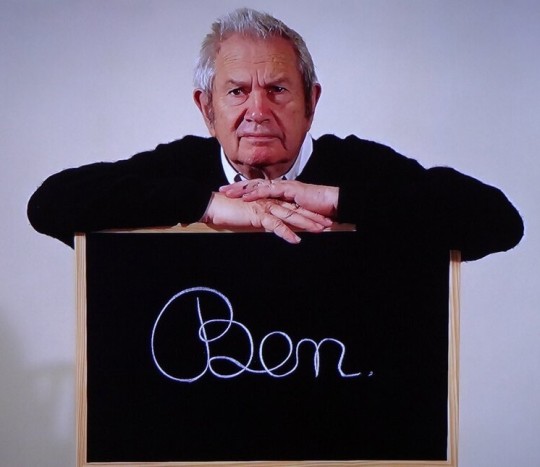
Ben Vautier
French conceptual artist known for his work featuring handwritten texts with quirky messages that had mass appeal
The French conceptual artist Ben Vautier – known simply as “Ben” – who has died aged 88, was best known for his Écritures – trademark painted epigrams in a simple cursive script on a monochrome background.
Instantly recognisable with their bold messages to the world, sometimes humorous, often political, always thought-provoking, his “writings” shout out from the canvas as if craving to be heard. “In my Écritures it is not the aestheticism that counts,” Ben said in 2010, in conversation with the curator Hans Ulrich Obrist. “I write to be read and understood. It’s the meaning that has to come across.”
The first Écriture, created in 1953, said, simply: “Il faut manger. Il faut dormir” (“You have to eat. You have to sleep”). It was an affirmation of life and the beginning of a series that would define his oeuvre for more than 70 years.
And, escaping from the walls, these mini-manifestos, which originated in the experimental culture of the Nice school of the 1950s, and Fluxus movement of the 60s, are now ubiquitous across France, to be found on postcards, stamps, wine labels, stationery and rucksacks.
Following Ben’s death, President Emmanuel Macron said: “On our children’s pencil cases, on so many everyday objects and even in our imaginations, Ben had left his mark, made up of freedom and poetry, apparent lightness and overwhelming depth.”
Born in Naples, Italy, Ben was the son of an Occitan French-Irish mother, Janet (nee Giraud), and a Swiss father, Max-Ferdinand Vautier. His grandfather was the Swiss painter and illustrator Marc Louis Benjamin Vautier. Following his parents’ divorce, Ben lived with his mother in Switzerland, Turkey, Egypt and Italy before they settled in Nice aged 14.He left the city’s Lycée du Parc Impérial at 16 and worked at a bookshop, Le Nain Bleu, where he first discovered volumes on the artists who would influence him. Interviewed last year for Forbes magazine and asked about his early artistic encounters, Ben said: “I picked only artists who shocked me because I was looking for something new, so I started with the abstract painters: Poliakoff, Soulages and Picasso. The shock of Marcel Duchamp came from a meeting with Arman, and after that, I opened up to the possibility that everything was art.”
“Everything is art” became his lifelong mantra, together with the other driving principle for Ben that “art must be new”. Elsewhere he said “My art will be an art of appropriation. I seek to sign everything that has not been signed. I believe that art is in the intention and that it is enough to sign.” When the Italian artist Piero Manzoni died in 1963, Ben signed his death certificate and declared it a work of art. And, following the birth of Ben’s daughter, Eva, in 1965, he signed her, as a new creation and a “living sculpture”.
Between 1958 and 1973 he ran a shop, Laboratoire 32, selling secondhand records, cameras, books and other publications. The space became a favourite meeting venue for artists of the Nice school, such as Yves Klein, César and Arman. N’importe quoi (Just anything), an installation composed of the shop’s interior, was acquired by the Centre Pompidou in 1975 and remains a testament to those early years in Nice.
In 1962 Ben had come to London as part of the festival of Misfits to perform a geste (happening) that involved spending two weeks living and sleeping in the window of Gallery One in Grosvenor Square, Mayfair. That year he met George Maciunas, founder of Fluxus, the Dada-influenced movement whose members, including Yoko Ono, Joseph Beuys and John Cage, engaged in experimental performances and events.
Fluxus encouraged a “do-it-yourself” approach in its artistic creations, valuing simplicity above complexity. Ben’s work embraced this approach and made the movement’s aesthetic clearly visible to the public, in art galleries and beyond.
Striking works include the self-referential Je suis transparent (I am transparent, 1970), a print edition in black writing on a see-through perspex background; and If art is everywhere it is also in this box (1972), with inscriptions in French, English, Italian and Nissart (a subdialect of Provençal), decorating four sides of a large plastic cube.
Initially selling as multiples in limited editions at his shop in the 60s, his productions soon moved into the mainstream, making his signed works available as mass-produced “Ben”-branded objects. He believed that there was “no art without ego”.
His works are now in private and public collections worldwide, including MoMA in New York and the Stedelijk museum in Amsterdam. Retrospectives have been held at the Musée d’Art Contemporain in Lyon (2010), Museum Tinguely, Basel (2015) and Museo Universitario de Arte Contemporaneo, Mexico (2022).
Arriving as a visitor in 2000 to Ben’s home in Saint-Pancrace, in the heights above Nice, which he shared with his second wife, Annie Baricalla, an artist whom he married in 1964, I was struck by the volume and variety of work that lay within and in the grounds of the house.
Commenting on this cuckoo-in-the-nest among a row of bourgeois residences that looked like a combination of fine art gallery, circus and junkyard, Ben confided with a chuckle: “Mes voisins me detestent.” (“My neighbours hate me.”)
He was a champion of minority languages, campaigning especially for Occitan – the tongue of southern France – and others, including Alsatian, Basque and Corsican, to be recognised in a country whose only official language is French. He reasoned that by preserving the vernacular, one can preserve the culture and dynamism of its people.
Ben’s first marriage, to Jacqueline Robert, in 1959, ended in divorce. Following Annie’s death on 5 June, “unwilling and unable to live without her”, according to a statement by his children, “Ben killed himself a few hours later”.
He is survived by his daughter, Eva, and his son, François, from his marriage to Annie.
🔔 Ben (Benjamin Vautier), artist, born 18 July 1935; died 5 June 2024
Daily inspiration. Discover more photos at Just for Books…?
7 notes
·
View notes
Text










Léna Maria was born in 1985 in Perpignan (France). After studying anthropology and geography, she turned to photography.
Since 2012, her work has been exhibited abroad, at the London School Of Economics in the UK, as well as in Rabat, Morocco (2013) and Hyderabad, India, at the Indian Photography Festival (2018).
In France, she took part in a group show at the Musée Picasso-Paris in 2017, where her photographs rubbed shoulders with images by Man Ray and poems by Paul Eluard. In 2019, she was a finalist for the Prix Polyptyque and exhibited at the Centre Photographique de Marseille.
She will soon be exhibiting at the BRIDGE festival in Athens.
9 notes
·
View notes